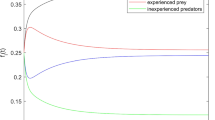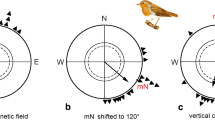Abstract
In this paper we demonstrate how prey localization can be acheived rapidly and accurately by coupling prey-selection and lens-accommodation processes within a feedback loop. Information derived from prey selection supplies a setpoint for accomodation. In turn, adjustment of the lens modifies the visual input and can alter the prey selection process. The natural feedback of this goal-seeking system automatically corrects for the problem of ambiguity in binocular matching.
Although it is of general interest as a depth algorithm, we tie the model to the known anatomy, physiology and behavior of frogs and toads. Instead of building a global depth-map we propose that the goal of catching a prey leads a frog or toad to select a particular region of its visual world for special scrutiny. We suggest that the first step of the prey-catching sequence is to adjust the accommodative state of the lenses and thus lock the visual apparatus on to a stimulus. We identify brain regions that could provide the neural substrates necessary to support the model's various functional stages and present experiments, with a computer simulation, that compare its functioning to animal behavior.
Similar content being viewed by others
References
Amari S, Arbib MA (1977) Competition and cooperation in neural nets. In: Metzler J (ed) Systems neuroscience. Academic Press, New York London, pp 119–165
Brown WT, Marks WB (1977) Unit responses in the frog's caudal thalamus. Brain Behav Evol 14:274–297
Cervantes F, Lara R, Arbib MA (1983) A neural model subserving prey-predator discrimination and size preference in anuran amphibia. In: Proceedings of the second workshop on visuomotor coordination in frog and toad: models and experiments. Technical report 83-19. Computer and Information Science Dept., University of Massachusetts, Amherst
Collett T (1977) Stereopsis in toads. Nature 267:349–351
Collett T, Udin SB (1983) The role of the toad's nucleus isthmi in prey-catching behavior. In: Proceedings of the second workshop on visuomotor coordination in frog and toad: models and experiments. Technical report 83-19. Computer and Information Science Dept., University of Massachusetts, Amherst
Didday RL (1970) The simulation and modelling of distributed information processing in the frog visual system. Doctoral dissertation, Stanford University
Didday RL (1976) A model of visuomotor mechanisms in the frog optic tectum. Math Biosci 30:169–180
Ewert J-P (1976) The visual system of the toad: behavioral and physiological studies on a pattern recognition system. In: Fite K (ed) The amphibian visual system A multidisciplinary approach. Academic Press, New York London
Ewert J-P, Seelen W von (1974) Neurobiologie und System-Theorie eines visuellen Muster-Erkennungsmechanismus bei Kröten. Kybernetik 14:167–183
Fite KV (1969) Single-unit analysis of binocular neurons in the frog optic tectum. Exp Neurol 24:475–486
Fite KV, Scalia F (1976) Central visual pathways in the frog. In: Fite K (ed) The amphibian visual system A multidisciplinary approach. Academic Press, New York London
Gaillard F, Galand G (1980) A possible neurophysiological basis for depth perception in frogs: existence of a horopter surface. J Physiol (Paris) 76:123–127
Georgopoulis AP Caminiti R, Kalaska JF, Massey JT (1983) Spatial coding of movement: a hypothesis concerning the coding of movement direction by motor cortical populations. In: Masson W, Paillard J, Schultz W, Wiesendanger M (eds) Neural coding of motor performance. Springer, Berlin Heidelberg New York
Glasser S, Ingle DJ (1978) The nucleus isthmus as a relay station in the ipsilateral visual projection to the frog's optic tectum. Brain Res 159:214–218
Grobstein P, Comer C (1983) The nucleus isthmi as an intertectal relay for the ipsilateral oculo-tectal projection in the frog, Rana pipiens. J Comp Neurol 217:54–74
Grobstein P, Comer C, Hollyday M, Archer SM (1978) A crossed isthmo-tectal projection in Rana pipiens and its involvement in the ipsilateral visuotectal projection. Brain Res 156:117–123
Grobstein P, Comer C, Kostyk S (1980) The potential binocular field and its tectal representation in Rana pipiens. J Comp Neurol 190:175–185
Grobstein P, Comer C, Kostyk SK (1983) Frog prey capture behavior: between sensory maps and directed motor output. In: Ewert J-P, Capranica RR, Ingle DJ (eds) Advances in vertebrate neuroethology. Plenum Press, London
Gruberg ER, Lettvin JY (1980) Anatomy and physiology of a binocular system in the frog Rana pipiens. Brain Res 192:313–325
Gruberg ER Udin SB (1978) Topographic projections between the nucleus isthmi and the tectum of the frog Rana pipiens. J Comp Neurol 179:487–500
Grüsser O-J, Grüsser-Cornehls U (1976) Neurophysiology of the anuran visual system. In: Linás R, Precht W (eds) Frog neurobiology: a handbook. Springer, Berlin Heidelberg New York
Heiden U an der, Roth G (1983) A mathematical network model for retino-tectal prey recognition in amphibians: In: Proceedings of the second workshop on visuomotor coordination in frog and toad: models and experiments. Technical Report 83-19, Computer and Information Science Dept., University of Massachusetts, Amherst
House DH (1982) The frog/toad depth perception system — a cooperative/competitive model. In: Proceedings of the workshop on visuomotor coordination in frog and toad: models and experiments. Technical Report 82-16, Computer and Information Science Dept., University of Massachusetts, Amherst
House DH (1984) Neural models of depth perception in frogs and toads. Doctoral dissertation, University of Massachusetts, Amherst
Ingle D (1970) Visuomotor functions of the frog optic tectum. Brain Behav Evol 3:57–71
Ingle D (1976) Spatial visions in anurans. In: Fite K (ed) The amphibian visual system a multidisciplinary approach. Academic Press, New York
Ingle D (1983) Visual mechanisms of optic tectum and pretectum related to stimulus localization in frogs and toads. In: Ewert J-P, Capranica RR, Ingle DJ (eds) Advances in vertebrate neuroethology. Plenum Press, London
Jordan M, Luthardt G Meyer-Naujoks C Roth G (1980) The role of eye accommodation in the depth perception of common toads. Z Naturforsch 35c:851–852
Krol JD Grind WA van de (1980) The double-nail illusion: experiments on binocular vision with nails, needles, and pins. Perception 9:651–669
Lara R, Arbib MA, Cromarty AS (1982) The role of the tectal column in facilitation of amphibian prey-catching behavior. Biol Cybern 44:185–196
Lawton DT (1984) Processing dynamic image sequences from a moving sensor. Doctoral dissertation, University of Massachusetts, Amherst
Lettvin JY, Maturana HR, McCulloch WS, Pitts WH (1959) What the frog's eye tells the frog's brain. Proc Inst Electr 47:1940–1951
McIlwain JT (1982) Lateral spread of neural excitation during microstimulation in intermediate gray layer of cat's superior colliculus. J Neurophysiol 47:167–178
Pitts WH, McCulloch WS (1947) How we know universals: the perception of auditory and visual forms. Bull Math Biophys 9:127–147
Raybourn MS (1975) Spatial and temporal organization of the binocular input to frog optic tectum. Brain Behav Evol 11:161–178
Robinson DA (1981) The use of control systems analysis in the neurophysiology of eye movements. Annu Rev Neurosci 4:463–503
Rossel S (1980) Foveal fixation and tracking in the praying mantis. J Comp Physiol 139:307–331
Author information
Authors and Affiliations
Rights and permissions
About this article
Cite this article
House, D.H. A model of the visual localization of prey by frog and toad. Biol. Cybern. 58, 173–192 (1988). https://doi.org/10.1007/BF00364137
Received:
Accepted:
Issue Date:
DOI: https://doi.org/10.1007/BF00364137




